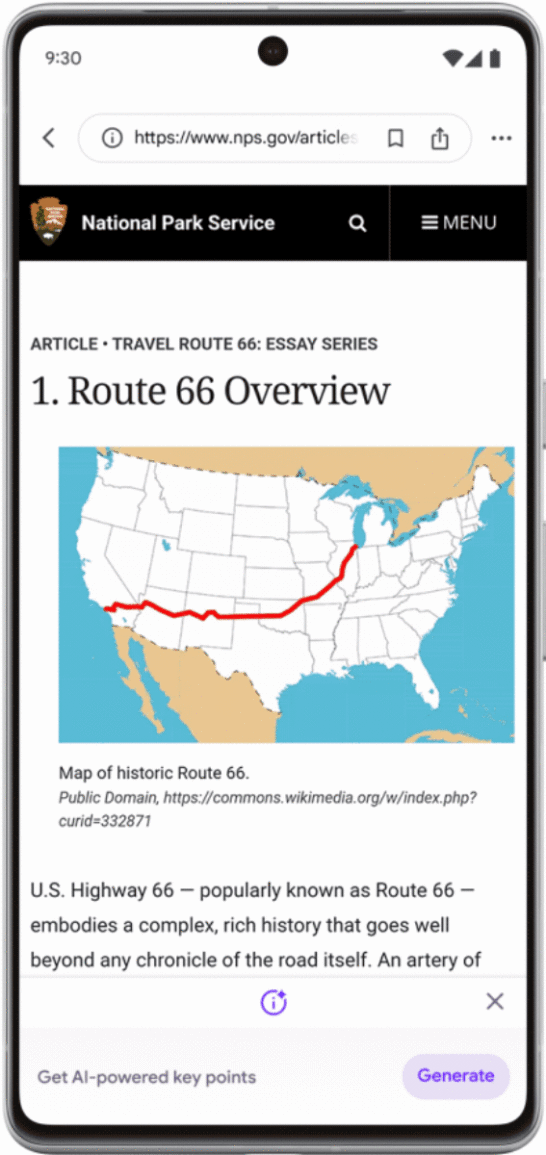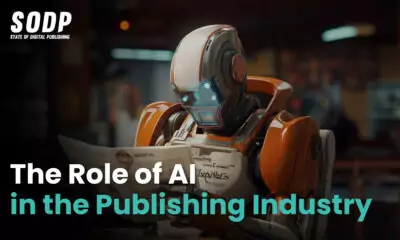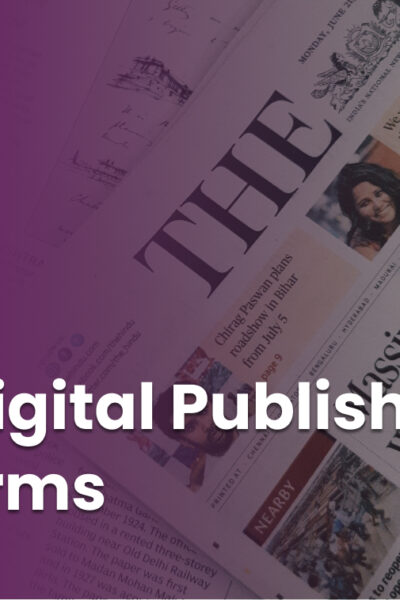Artificial intelligence (AI) in the publishing industry has steadily advanced for more than a decade, with some major media outlets adopting automated systems to produce content. Initially used to cover weather forecasts, sports recaps and financial reports, this automation expanded to cover a broader spectrum of creative tasks.
By the 2020s, the focus largely shifted to generative AI able to process and emulate human language. That was primarily due to advanced machine learning models identifying patterns within unstructured datasets. These models could analyze millions of images, books, and articles to generate original and remarkably human-like written content based on specific input parameters.
The release of ChatGPT in November 2022 significantly heightened public interest in AI technologies, triggering media professionals’ concern about losing their jobs to robots. The user-friendly chatbot interface enabled more people to explore natural language processing (NLP) capabilities, and the overall quality of its content prompted trendsetters such as Nature Publishing Group and PNAS Journals to revise their editorial policies.
ChatGPT acquired 100 million users at an unprecedented pace, catapulting its developer, OpenAI, to amass over $1 billion in revenue. This groundbreaking success spurred venture investments into AI companies, which reached $40 billion in the first half of 2023 and urged enterprises to explore AI’s capabilities across many industries.

The global AI in the media and entertainment market is forecast to grow from an expected $16.1 billion in 2023 to $85.6 billion in 2030. Source: Research and Markets
Given the ever-growing amount of compute available for model training, advanced NLP chatbots have yet to reach their full potential. However, AI has already had a profound impact on the publishing world akin to the emergence of the Internet.

A WAN-IFRA survey of news publishers showed that by May 2023 about half were actively using ChatGPT or similar tools, with 70% expecting them to help journalists. Source: WAN-IFRA
The new technology has transformed the publishing industry’s landscape, presenting challenges and benefits for writers and new opportunities for content providers. The data-driven approach requires businesses to embrace these changes, making proficiency in AI-based tools essential for journalists and editors to secure their positions.
What Is Generative AI?
Generative artificial AI (AI) is a machine-learning model capable of generating new content, including text, images, music, animation or code. Such models process massive amounts of human-produced content using a self-supervised learning format that allows them to mimic human creators.
For a long time, AI mainly developed around data interpretation, including training machine learning algorithms to understand what’s in a picture. However, the new technology captured widespread attention when researchers switched from image recognition to image generation. In January 2021, OpenAI released DALL-E — a model that converted users’ text descriptions into illustrations.

The Economist magazine cover was crafted in Midjourney, another art generator, which became a hit after its launch in 2022. Source: The Economist
Generative AI apps process inputs through large language models (LLMs). LLMs, inspired by the human brain, regard words and parts of words as nodes on a multidimensional map. They strive to define the distance between these nodes and thus predict the word most likely to come next in a particular sequence. With more data, an LLM can write more complex copy or create visuals relevant to the subject.
Microsoft has confirmed that its Bing chatbot runs on OpenAI’s GPT-4 LLM, also available to ChatGPT subscribers. Those who prefer not to subscribe can still freely access GPT-3.5. The two services offer diverse experiences, while Google’s Bard is powered by a different model.
The capabilities of these advanced chatbots encompass far more than text generation. They modify our interaction with search engines, making queries and results more conversational. Google claims to take the next step forward in this transformation with its Search Generative Experience (SGE), available via Google Labs in the US and UK.

The above image shows how SGE organizes the results page to help users get more from a single search. Source: Google Labs
SGE suggests an overview of a topic and supports it with links to resources for further exploration. It gives the idea of what questions a particular publication will answer.
These quick summaries and compilations simplify navigation for users. However, they raise some questions for content creators over whether they should allow search engines to use their content for training.
Ultimately, search engines and chatbots can use human-created information to help their users without sending readers to their source pages.
Where Is AI Used Today?
Artificial intelligence (AI) algorithms are used throughout the publishing industry, from shaping news delivery to customizing a paywall’s subscriber journeys.
For example, Reuters used its News Tracer tool as far back as 2016 to automatically spot and verify breaking news on Twitter. Initially, AI was about automating processes to help publishers focus on content creation.
The New York Times experimented with an AI-driven interface back in 2015, automating day-to-day duties of tagging and annotation. Source: NYTLabs
The New York Times also pioneered the use of prescriptive analytics to manage its paywall. The Dynamic Meter learned from how subscribers engaged with content to decide how many articles non-registered users could read for free.
New abilities have broadened AI’s application to include content creation and curation.
According to the JournalismAI global survey, 90% of newsrooms resort to AI at different stages of content production. Source: JournalismAI
Trends and Subject Detection
Monitoring services such as Google Trends or CrowdTangle help publishers identify trending topics for particular regions or demographics. Additionally, AI tools can help with brainstorming, with suggestions serving as a starting point for further discussion.

In June 2023, scientists presented AngleKindling, a GPT-3-driven tool to help journalists explore press releases. Source: Github (PDF download)
Transcribing and Translation
Transcribing interviews and discussions has historically been one of the most disliked aspects of a journalist’s job. However, meeting assistants such as Otter, Sembly and Airgram can generate notes and summaries, allowing content creators to focus on more valuable tasks.
These services operate in a limited number of languages, but the Danish digital newspaper Zetland has developed the platform Good Tape, capable of transcribing audio in more than 90 languages.
Automated translation for different languages has also developed unevenly but primarily allows one to convey a message with minimal risk of misinformation or insult.
In 2022, Finnish public broadcaster Yle launched a service for Ukrainian refugees that provided automatically translated reports that had also been checked by a native speaker. Yle had already started giving information in Somali, Arabic, Kurdish and Farsi during the pandemic.
Writing and Editing
Large language models (LLMs) can check grammar and offer concise content summaries, create notifications, tailor them for newsletters or social media platforms and turn written copy into scripts for podcasts or videos.
ChatGPT, Bing, Claude and other LLM-powered services can suggest lists of engaging headlines. Although they still need validation, machine learning algorithms simplify content production processes and boost their speed.

AuthorityHacker’s survey of 3,812 digital marketers found that 85.1% of those who used AI used it to write articles or blogs. Source: AuthorityHacker
In July 2023, News Corp Australia revealed that AI technology allowed four staff members to produce 3,000 local news articles per week. This contributed to hyperlocal mastheads accounting for 55% of all subscriptions.
However, News Corp later clarified that automation primarily involves templated information, such as fuel price updates or daily court lists, and that all articles are checked by the human team.
Creating Visuals
Neural networks such as Midjourney, DALL-E or Stable Diffusion enable authors and editors to craft illustrations for their articles and posts. It took about seven minutes to create, choose and edit the base cover image for this article before additional branded overlays were added.
The cost to create a unique image is an $8 per month subscription, which is relatively minor, considering that unique imagery has a better chance of ranking within Google’s Image Search than stock photos.

Another image created especially for this article using Midjourney
Content Distribution
AI helps publishers segment their customers and identify the best channels, formats and time for delivering relevant content to a particular group of readers. Various websites tailor their home pages depending on the visitor’s demographic characteristics and prior behavior.
Content personalization includes automatic article translation, dynamic email marketing campaigns or tailoring of existing content for different social media platforms.
Dedicated tools for social media, for example, WordStream or Emplifi, offer smart scheduling, advertising campaign optimization, advanced tracking and audience insights.
Benefits of AI in Publishing
Artificial intelligence (AI) offers publishing houses, media outlets and individual journalists the opportunity to save time and money with faster daily operations and more informed decisions. It also allows publishers to enhance relations with their readers, attract new audiences and elevate their copy quality.
Cost Efficiency
AI can significantly lower operational costs for publishers by streamlining repetitive manual tasks and reducing their employees’ workloads. Machine learning algorithms provide actionable insights to optimize their content and marketing strategies without the high costs associated with market research. Together with tools available for content creation, it allows smaller teams to operate at a greater scale.
Advanced audience targeting, fast and cheap image generation and writing and editing assistants, such as Grammarly, offer unprecedented opportunities for digital publishing. Higher distribution accuracy allows niche media to connect with readers without heavy investment in advertising. As publishers increase efficiency, they can cover a broader range of events.
Research Assistance and Fact-Checking
AI can help journalists navigate large amounts of text to identify relevant stories and hidden connections between facts, events, entities, and people.
new/s/leak, maintained by Hamburg University’s Language Technology, is a free tool designed to sift through the information distributed by Wikileaks. Another example of an AI project for investigating journalism is the University of London’s DMINR.
AI helps distinguish facts from fakes by comparing newly published information against datasets of reliable sources or tracing an image history since its first detection by search engines.

A screenshot confirming that “robots” at Los Angeles’ SoFi Stadium were actors advertising the film The Creator. Sources: Reuters, Fact Check Explorer
Content Personalization
Despite privacy concerns, the demand for personalized experiences keeps growing. One survey showed that this demand may influence over half of consumers to become repeat buyers (PDF download), up 7% year on year.
AI-powered tools allow media organizations to customize their content for targeted distribution. In 2020, The Washington Post dropped AI-fueled audio election updates, personalized to match its political podcast listeners’ locations.

Screenshots of an advanced chatbot customized for media companies. Source: Techcrunch
Generative AI offers publishers the chance for personal interaction with their readers, and now they can integrate existing models into their customer support services.
In February 2023, Instagram co-founders rolled out Artifact, a personalized news app that suggests reliable, fact-checked articles based on reader preferences. Additionally, Artifact allows users to choose between reading and listening, as it applies a text-to-speech model with naturally sounding voices.

A screenshot shows that Artifact users can listen to reports and stories read in Snoop Dogg’s or Gwyneth Paltrow’s voices. Source: Medium
Success Cases of AI in Publishing
The use cases for artificial intelligence (AI) within publishing continue to grow, creating new opportunities for improved efficiency. Let’s explore some existing success stories to further understand how this technology shapes the industry.
5 AI-Driven Media Projects
1. BuzzFeed
BuzzFeed announced in January 2023 that it was experimenting with ChatGPT to automate its quiz creation process.
The test was a success in terms of generating more user engagement. Visitors spent 40% more time on AI-generated quizzes than on those created by human editors.

An entire BuzzFeed page dedicated to AI-generated quizzes. Source: BuzzFeed
2 Forbes
The financial news giant rolled out Bertie, a proprietary publishing platform, in July 2018. This AI-powered content management system (CMS) provided newsroom journalists and contributors with lists of trending topics based on their prior publications.
Additionally, it offered engaging headlines and relevant images, though it didn’t attempt to write entire articles. After the system’s launch, Forbes doubled the number of its monthly visitors.

The Bertie CMS suggesting ideas for headlines. Source: Forbes
3. Bloomberg
Bloomberg unveiled BloombergGPT, a domain-specific language model based on 50 billion parameters, in March 2023.
Content from our partners

The table shows how BloombergGPT overperforms existing open models of a similar size on financial tasks. Source: arXiv
4. The BMJ
The British Medical Journal (BMJ) examined GPT-3’s capacity to produce engaging Christmas-themed titles for research articles. Interestingly, the respondents rated AI-generated titles at least as enjoyable as those crafted by human authors.

The test featured by BMJ suggests recognizing automatically generated titles. Source: BMJ
5. The Globe and Mail
The Canadian newspaper sold its content curation and analytics platform, Sophi Inc., to global revenue management company Mather Economics in August 2023. The AI-powered tool was designed to operate The Globe and Mail’s paywalls, but it expanded to other domains after the transition.
Challenges to AI Solutions Implementation
Organizations adopting artificial intelligence (AI) often face financial and technical constraints. For example, smaller media may lack funding to hire qualified engineers.
Publishers must also consider the legal and reputational risks that the careless application of AI may cause.

Over 40% of media managers face technical challenges, including needing more finance, during AI integration projects. Source: JournalismAi
Technical Issues
Despite the advantages of adopting new technology, the challenge of overcoming the initial learning curve can put publishers off. Not only do they have to secure editorial buy-in, but they also need to integrate new solutions into existing systems. There’s also the fear of becoming dependent on something they don’t understand fully.
Content Quality
Generated copy may fall short of expectations, prompting severe criticism of publishers. Moreover, large language models (LLMs) tend to perpetuate mistakes from the datasets they were trained on.
One notable issue is the perpetuation of various biases, a common characteristic of AI, consistently underscored by research.
Ethical Challenges
Biases present an ethical problem that needs to be addressed. Another challenge concerns job risks caused by AI, particularly for white-collar positions. Its implementation may trigger apprehensions among employees, requiring proactive internal communication.
Legal Risks
AI aso raises data security concerns, given its need to process substantial volumes of user data to generate personalized content. Moreover, there are growing corporate concerns over data leaks thanks to users inputting sensitive information for automated text analysis.
Additionally, content produced by AI is still in a gray zone in terms of copyright protection, as cases are still working their way through the system.

Publishers aren’t ready to fully rely on AI generated content. Source: WAN-IFRA
Other risks include over-automation and the subsequent loss of a unique tone of voice and general human touch. But that brings us directly to the need for continuous oversight by the publishing team.
Final Thoughts
It’s expected that 90% of online content may be synthetically generated by 2026. If that forecast proves accurate, artificial intelligence (AI) is set to profoundly impact the publishing and content creation industry as a whole.
Newspaper editors, TikTok creators, designers, writers — everyone within the creative space will feel the impact of this scaling in some way. It will alter job markets, underscoring the importance of data engineering skills and technical knowledge for journalists.
As AI integration progresses, publishers must adopt transparent and ethical strategies and form dedicated task forces. The publishing industry’s business aspirations will align more closely with ethical values, given the need for fact-checking to safeguard against reputational risk.
With that said, publishers still need to leverage AI to maintain authority, explore reader behavior and reach wider audiences if they want to remain competitive.












